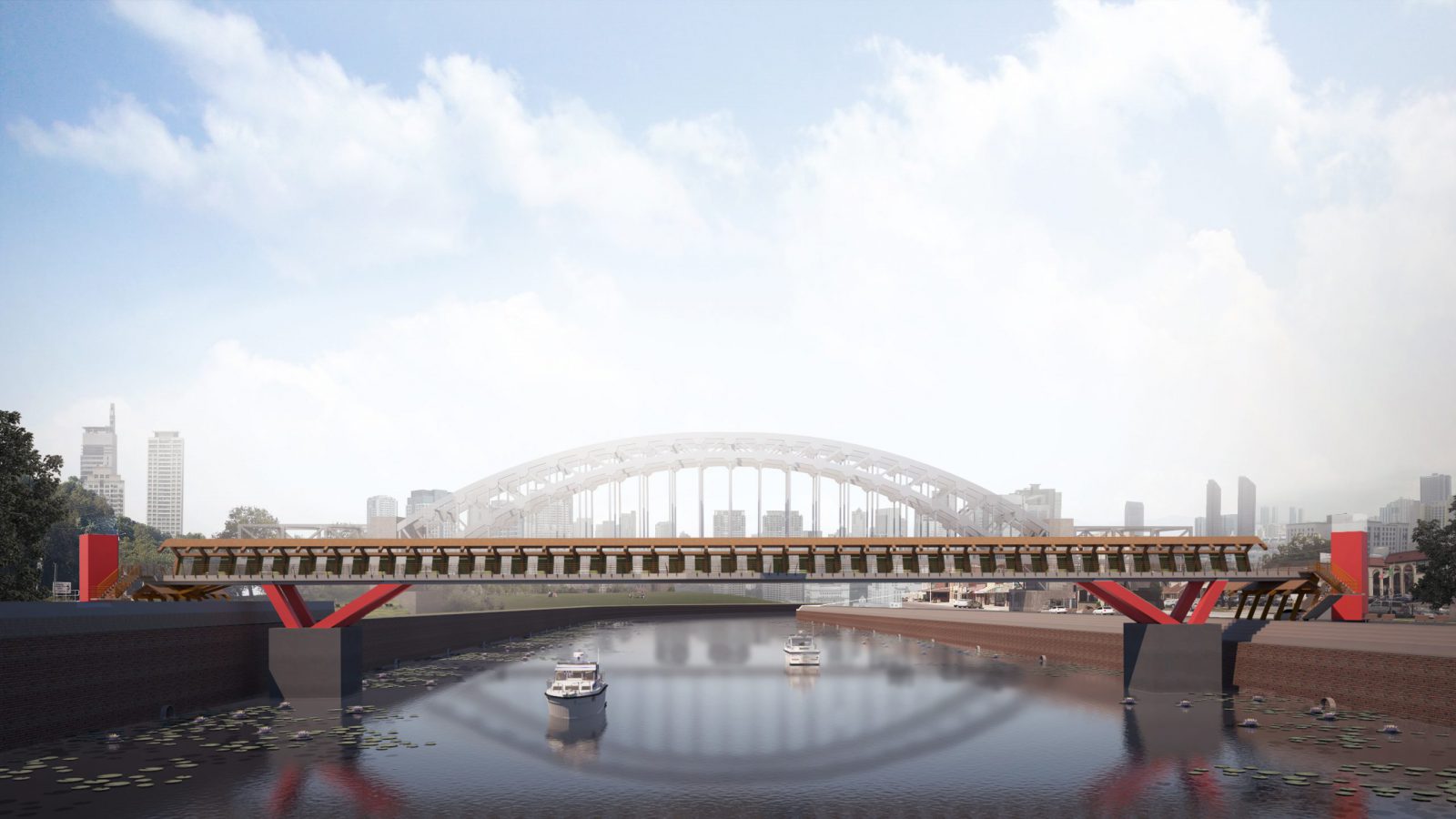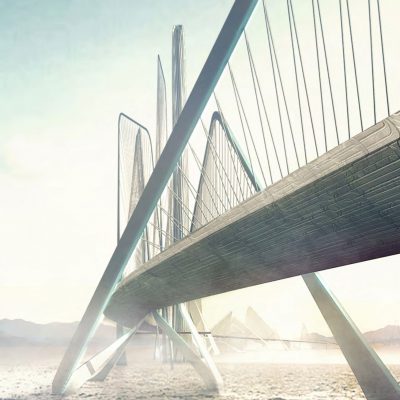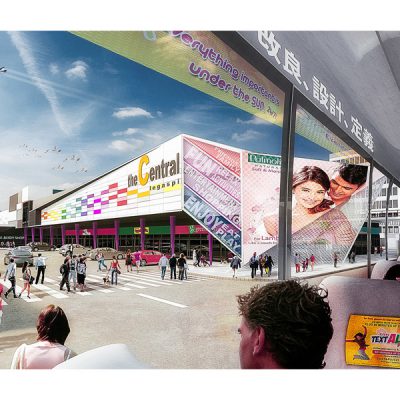Spanning over 25 km, Pasig river bisects Manila into an urban north and south. There are currently 19 bridges crossing the Pasig river, all of which built for vehicular traffic. While bridges for cars function as a bypass, a pedestrian bridge offers alternative transport options, brings people together and creates social benefits to changing urban fabrics. With this infrastructural void in Metro Manila coupled with a renewed demand for alternative transport options in light of the recent pandemic, the Riverlane project aims to unite Quiapo and Lawton by prioritizing human activity, connections and scale.
Tapping into architecture as a solution to urban issues and emphasizing synergies between different ecologies and urban systems, the Riverlane responds to an increased need for pedestrian mobility. As our cities struggle over transportation and mobility amidst lockdowns, wider walking paths must be given priority. Streets should be planned to promote pedestrianization, encouraging biking and walking over driving. Interventions in urban planning such as the Riverlane project must be supported in order to encourage people to live close to where they work. These are lifestyle changes we must encourage and promote through social infrastructure.
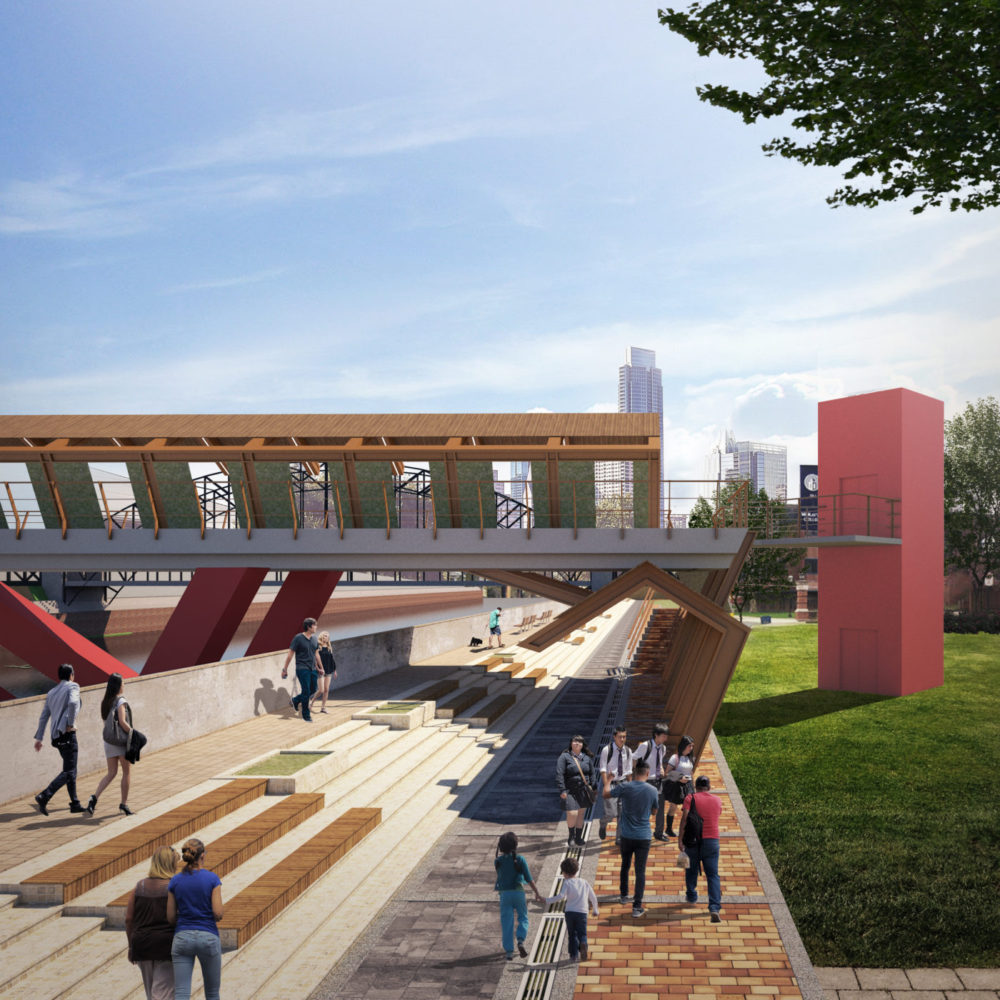
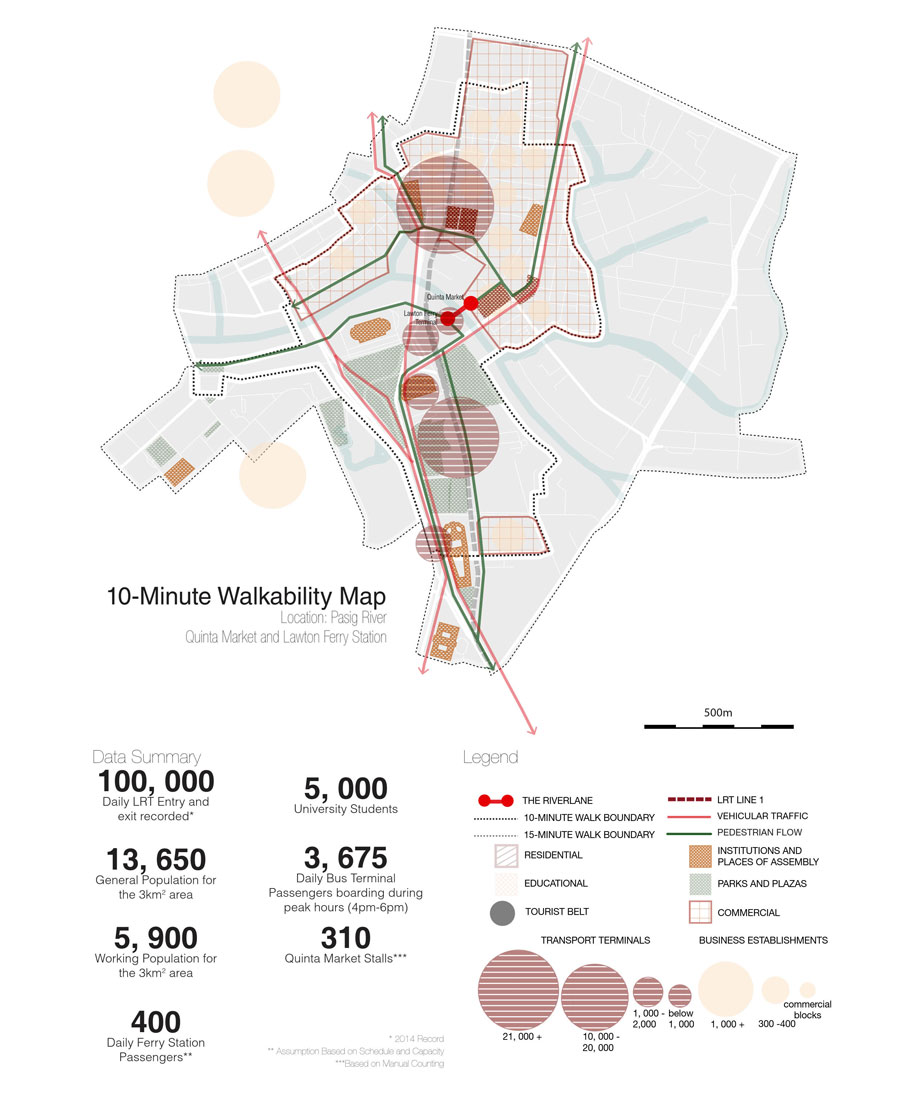
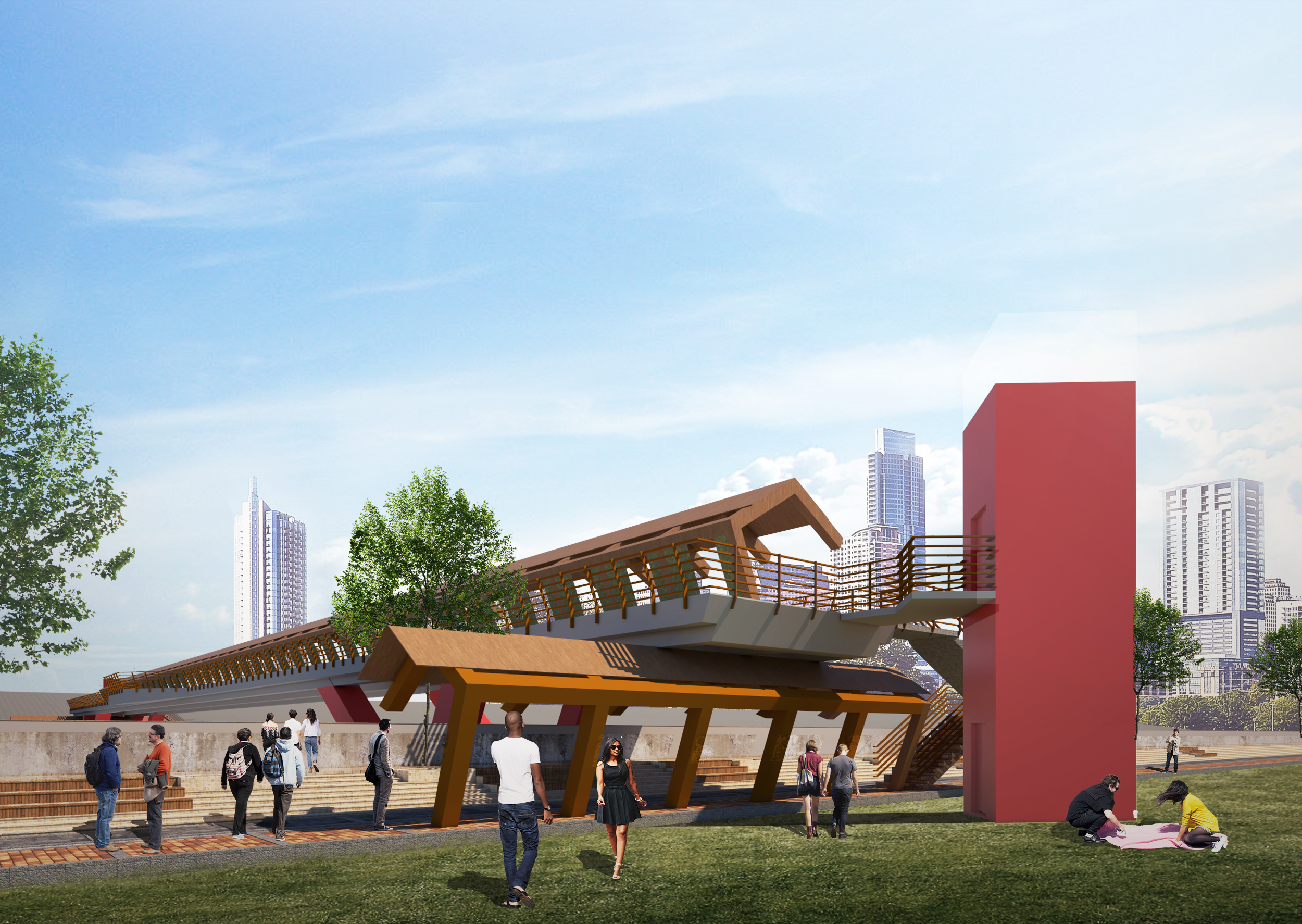
The Riverlane will transform the pedestrian bridge into a lively urban park by attracting visitors to participate in programs and initiatives for the community. By providing activities for the public, the private sector will benefit from the vibrance of the place resulting in a public and private partnership for a more attractive place. The bridge will also function as a wayfinding instrument by connecting the surrounding district to their history. The design of the Riverlane is intended to act as a “table of contents” of what its district has to offer, be it historical, institutional or commercial giving pedestrians a tour of its beauty. More than a pedestrian link, the bridge will become an interactive park, providing not only a place of gathering but also strengthening the sense of community in
our city.
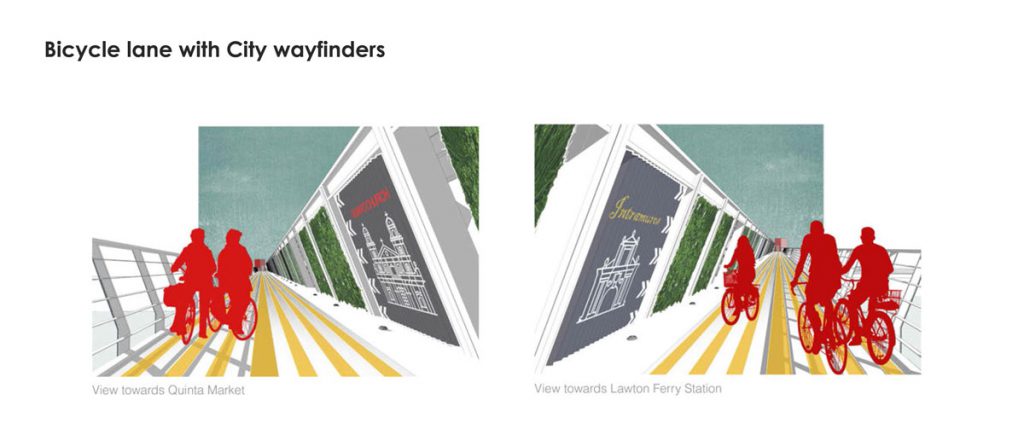


Wayfinding
The concept of wayfinding will connect the surrounding district to their history. The design of the Riverlane is intended to act as a “table of contents” of what its district has to offer, be it historical, institutional or commercial giving pedestrians a tour of its beauty. More than a pedestrian link, the bridge will become an interactive park, that creates a sense of attraction.
Landmark Arches
The Landmark Arches with kilometer reading will present landmarks around the area. The searches will help pedestrians to recognize the surroundings sites as they pass through the bridge.
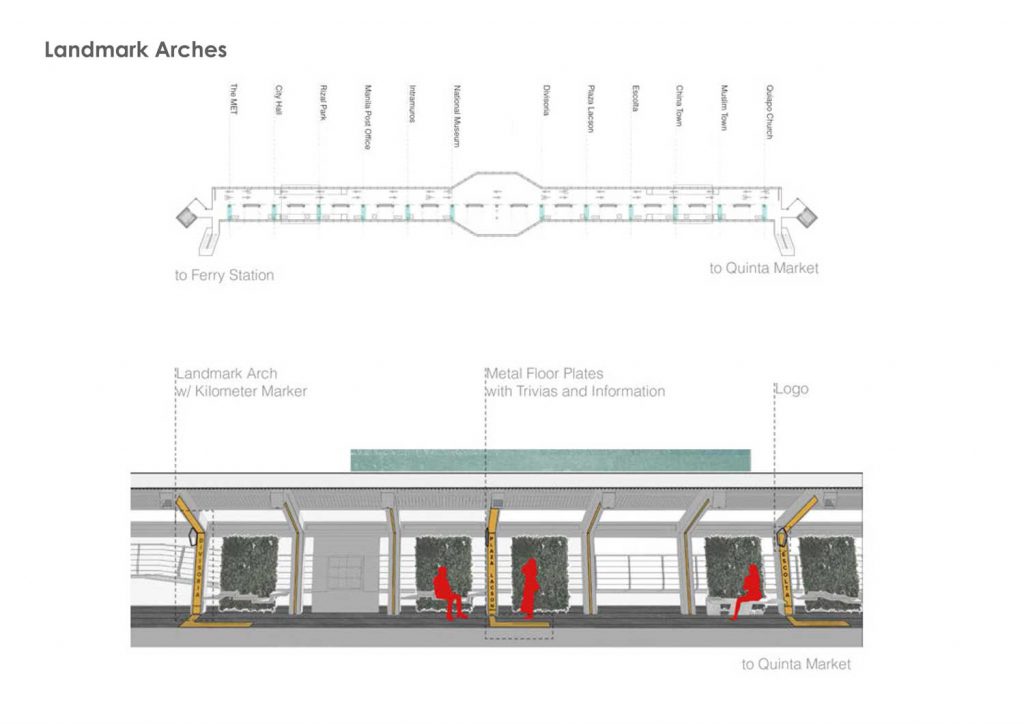

Interactive Walls
Promoting social engagement, interactive walls are located across the bridge to promote and provide information of places and events around the area.
3D Wall Art
With a continuous flow, thebicycle lane uses its walls as visual cues for direction and information through 3D wall art. Interactive walls promoting social engagement, interactive walls are located crossthe bridge to promote and provideinformation of places and eventsaround the area.




Learn more:
Inquirer.net: The City of Tomorrow
Post Pandemic Perspectives.
